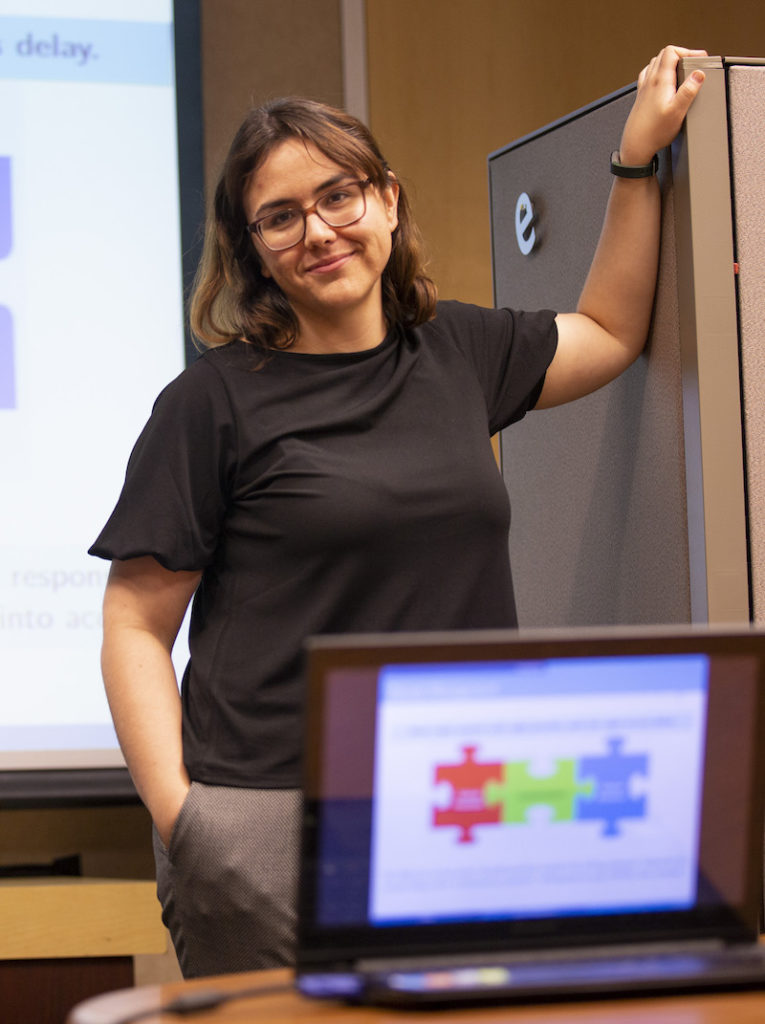Even the most high-quality health care delivered by conscientious providers can fall short of optimal performance when hindered by inefficient patient access management.
The problem, says Arizona State University industrial engineer Esma Gel, is that many hospitals remain largely mired in “the traditional first-come, first-served routine” that can waste physicians’ time and effort and fail to most effectively serve patients.
What’s needed to remedy the faulty process is “data-driven, needs-based prioritization,” said Gel, an associate professor in the Ira A. Fulton Schools of Engineering at Arizona State University.
In the past four years, Gel has worked on separate projects at Mayo Clinic hospitals in Scottsdale, Arizona, and Rochester, Minnesota, to test machine learning and operations optimization methods for developing an advanced intelligent decision-making system to guide such prioritizing efforts.
Using advanced data analysis tools and operations optimization methods, Associate Professor Esma Gel and Mayo Clinic researchers are refining the system they’ve developed to improve patient access to health care services. Photo by Erika Gronek/ASU
Gel says use of such advanced analytics tools to understand patient behavior and treatment needs will help ensure better decisions are made about giving patients what she calls “3R health care access” — making sure the right patient sees the right provider at the right time to receive the best treatment.
In her first project at Mayo Clinic Arizona’s neurosurgery department, Gel and two graduate students studied a large volume of data and found, for instance, that neurosurgeons were spending significant time with patients whose conditions did not require surgical intervention or even immediate care.
“It’s a big waste of valuable resources when patients are not routed to an entry point into the system that matches the level of their need for care,” Gel said.
Encouraged by results showing that improved routing of patients through the health care system can result in more timely access — especially for patients with critical surgical needs — Gel and industrial engineering doctoral student Derya Kilinc developed methods to extract highly accurate decision tree algorithms from data to predict the need for surgical intervention for patients with lower back pain.
“This algorithm can be used even by an appointment scheduling agent without medical training to make sure that patients with urgent care needs can be prioritized, resulting in better patient health outcomes,” Gel said.
Findings from their work with collaborators at Mayo Clinic Arizona’s Department of Neurosurgery motivated her to pursue a new research agenda to improve patient access management. After that first project, she began collaborating with faculty members Dr. Kalyan Pasupathy and Dr. Mustafa Sir in the Department of Health Sciences Research at Mayo Clinic in Minnesota to construct a comprehensive plan to develop the data-driven patient access management system.
“Currently, the huge amounts of data collected on health care systems are not being used to improve the way that we provide patient access,” Gel said. “Our vision is to create a set of analytical tools and algorithms to learn patient preferences and behavior, accurately assess treatment needs and provide effective recommendations on how each patient should get timely access, given resource and provider constraints, to maximize patient health outcomes and minimize waste.”
Derya Kilinc helped to develop the predictive algorithm and key protocols used to develop a novel patient access prioritization system. Photo by Erika Gronek/ASU
Through a two-year collaboration, Gel, Pasupathy and Sir have achieved several milestones they set for the project. They have jointly filed an invention disclosure on the various components of their system they are developing as a step to explore the need for patent protection. They also produced two research manuscripts, with the help of Kilinc, who earned her doctoral degree this summer and has joined Pasupathy’s group at Mayo Clinic in Minnesota as a postdoctoral researcher.
The team’s results are receiving positive reaction from Mayo Clinic leadership, which Gel says should help attract federal funding and commercial investment to continue research and development of new patient access management system models.
“Our goal is to develop a novel set of integrated technologies to transform the current practice in health care access," Gel said. “Our work over the past four years has yielded several proof-of-concept results, which we are currently working to expand on.”
Top photo by Pixabay
More Science and technology

Research expenditures ranking underscores ASU’s dramatic growth in high-impact science
Arizona State University has surpassed $1 billion in annual research funding for the first time, placing the university among the top 4% of research institutions nationwide, according to the latest…

Programming to predict the unpredictable
As the natural world rapidly changes, humanity relies on having reliable, accurate predictions of its behavior to minimize harmful impacts on society and the ecosystems that sustain it.Ecosystems of…
Findings on adenoviruses in baby gelada monkeys provide a window into our own cold and flu season
If you have young kids or spend time around day care centers, you know the drill: Someone gets a cold, and soon the whole group is sniffling and sneezing. Now imagine that same pattern playing out in…


